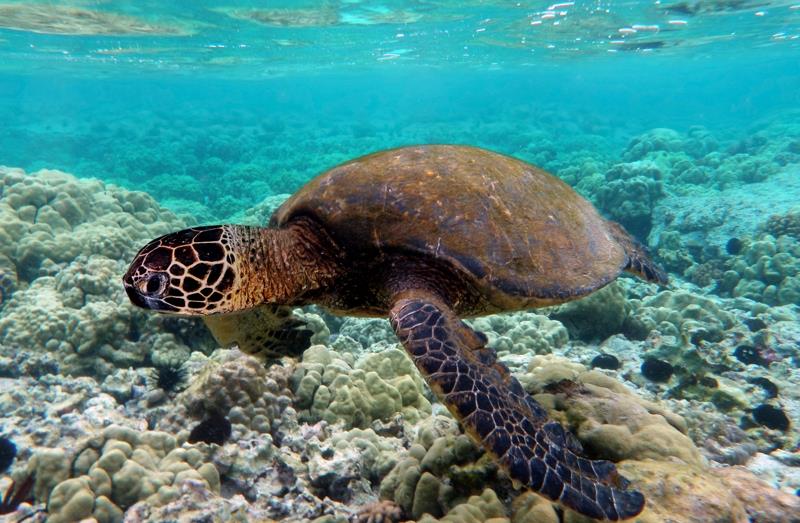
Pollution and global warming are fueling female-biased sex ratios in sea turtles
by Daria Blackwell 12 Jan 2024 17:40 UTC

Green sea turtle © Brocken Inaglory
Pollution and warming temperatures are inducing a sex imbalance among endangered green sea turtles, some populations of which are already 99% female, limiting the gene pool and fertilization rates.
The impacts of rising temperature are particularly pertinent in species with temperature-dependent sex determination (TSD), where the sex of an individual is determined by incubation temperature during embryonic development. In sea turtles, the proportion of female hatchlings increases with increases in the incubation temperature.
With average global temperature already increasing precariously close to the 1.5C Paris agreement and predicted to increase 2.6 degreesC by 2100, many sea turtle populations are in danger of female-only offspring production and high egg mortality. Sea turtles lay their eggs in the sand on beaches. As the temperature of the sand increases, so does the likelihood that it will encourage the development of female embryos.
One scientific group studied the effects of the temperature of the sand on sex determination in the Great Barrier Reef (GBR). Combining their observations with temperature data shows that the northern GBR green turtle rookeries have been producing primarily females for more than two decades and that the complete feminization of this population is possible shortly.
Another group undertook a study to determine if other factors were also contributing to this trend as it is known that some ocean contaminants are estrogen stimulators. Substances that might have influenced sex development include chromium, antimony, barium, and cadmium which have previously been demonstrated to be estrogenic. The scientists found contaminants that mimic the female sex hormone inside the developing embryos, pushing the odds toward female sex development.
Although this has been studied in turtles, similar effects are thought to be affecting other animal populations. Considering the risks of feminization due to climate change and potential contaminant effects on hatchling health and sex determination, future studies exploring the effects on biodiversity in our oceans are imperative.
Links and attachments:
This article has been provided by the courtesy of the Ocean Cruising Club.